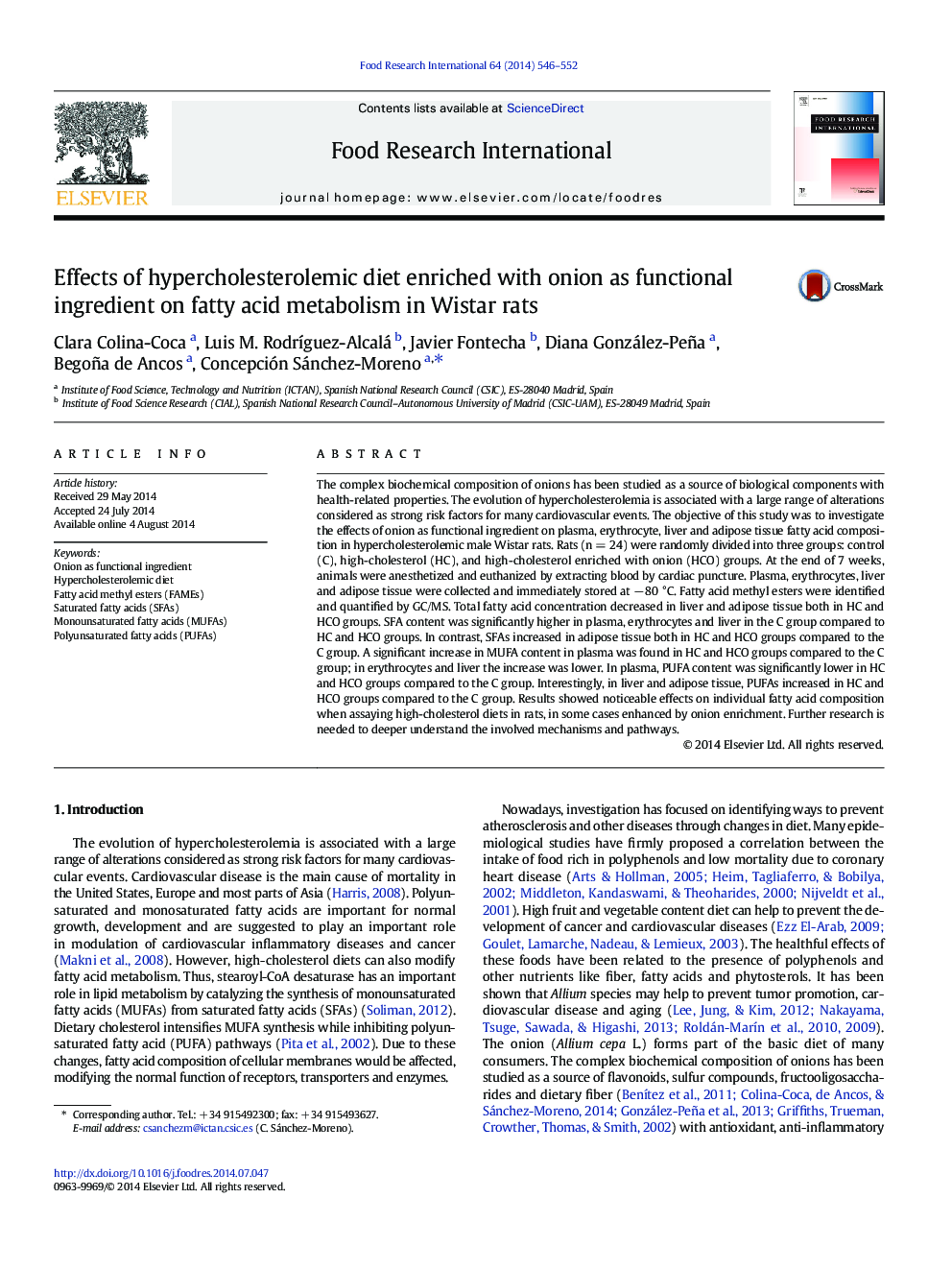| Article ID | Journal | Published Year | Pages | File Type |
|---|---|---|---|---|
| 6396689 | Food Research International | 2014 | 7 Pages |
â¢Effects of onion as functional ingredient on fatty acid (FA) metabolism in rats.â¢FAMEs were analyzed by GC/MS in plasma, erythrocytes, liver and adipose tissue in rats.â¢Noticeable variation in FA metabolism in hypercholesterolemic rats enhanced by onion.
The complex biochemical composition of onions has been studied as a source of biological components with health-related properties. The evolution of hypercholesterolemia is associated with a large range of alterations considered as strong risk factors for many cardiovascular events. The objective of this study was to investigate the effects of onion as functional ingredient on plasma, erythrocyte, liver and adipose tissue fatty acid composition in hypercholesterolemic male Wistar rats. Rats (n = 24) were randomly divided into three groups: control (C), high-cholesterol (HC), and high-cholesterol enriched with onion (HCO) groups. At the end of 7 weeks, animals were anesthetized and euthanized by extracting blood by cardiac puncture. Plasma, erythrocytes, liver and adipose tissue were collected and immediately stored at â 80 °C. Fatty acid methyl esters were identified and quantified by GC/MS. Total fatty acid concentration decreased in liver and adipose tissue both in HC and HCO groups. SFA content was significantly higher in plasma, erythrocytes and liver in the C group compared to HC and HCO groups. In contrast, SFAs increased in adipose tissue both in HC and HCO groups compared to the C group. A significant increase in MUFA content in plasma was found in HC and HCO groups compared to the C group; in erythrocytes and liver the increase was lower. In plasma, PUFA content was significantly lower in HC and HCO groups compared to the C group. Interestingly, in liver and adipose tissue, PUFAs increased in HC and HCO groups compared to the C group. Results showed noticeable effects on individual fatty acid composition when assaying high-cholesterol diets in rats, in some cases enhanced by onion enrichment. Further research is needed to deeper understand the involved mechanisms and pathways.
